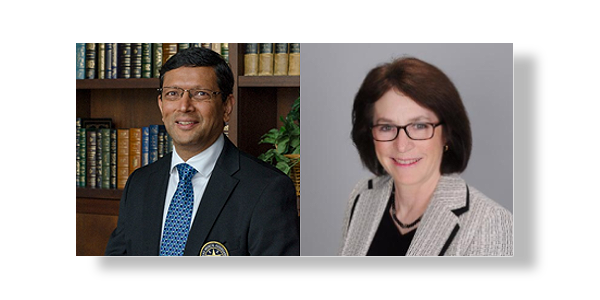You’re Fired!!! (Actually, Just Reinvented)
July 17, 2018
The Future Imagined
Imagine yourself soaking up the sun on a tropical island. A subtle breeze from the swaying palm trees keeps you at the perfect temperature. In one hand you are holding a brightly colored drink with its obligatory umbrella garnish. The drink is non-alcoholic, of course, because you are working. In the other hand is a device that is monitoring your patient’s open wound and alerting you to changes in wound bed characteristics that must be acted on. You push a button to modulate the wound environment and return to the sounds of the crystal clear blue water lapping at your feet. Sounds nice, right? Unfortunately, it will more likely play out differently.
You will be in an office cubicle among 35 health care providers in a non-descript office park. In front of you will be three desktops—each displays patient information and a real-time view of the patient’s wound. The artificial intelligence (AI) software has already ordered confirmatory diagnostics, has set up an interim treatment plan, and has instructed the family member how to do both. A drone is delivering the necessary supplies to the patient’s location. We’ll call the software “AI-mee.” “Hey, AI-mee, what’s the difference between skin perfusion pressures and an ankle-brachial index?” “It really doesn’t matter, Dave,” AI-mee replies, giving a nod to the movie 2001: A Space Odyssey. “I only need you to sign off on this because the law requires a licensed health care provider to do so.” The scenario repeats 16 times per hour. That’s the productivity requirement for you to keep your position. Ok, so I exaggerate.
According to the Institute of the Future, 85% of the jobs in 2030 will be different because of emerging digital technology.1 Even though automation is estimated to eliminate between 39 and 73 million jobs, new ones are being created. Today’s wound management provider positions will not be the same as in the future. That’s because they don’t yet exist. As technology rapidly advances, expert clinicians will be needed to verify clinical algorithms to improve AI machine learning. The tribulations of self-driving cars are well known. We’ll be tasked to prevent needless errors and deaths in the wound sector, too.
The Increasing Roles of Technology and Artificial Intelligence in Medicine
The demand for this technology is coming from our patients and their younger, tech-savvy family members. After all, they have consulted “Dr. Google” or “Medscape, MD” before their visit and are giving us “the courtesy to agree” with their diagnosis. Although many of us bristle at the thought of our patients telling us how to do our job, we must appreciate that patient empowerment often improves clinical outcome.2,3 Embrace technology. Resistance is futile. Who will educate new providers in wound management? Most likely, we will see virtual reality and simulation labs proliferate for training purposes.
Augmented reality is the first step. By combining physical images with computer-generated ones, a clinician can experience the expected healing trajectory of a wound, as well as its complications, over a matter of hours—not weeks and months as we currently do today. A telemedicine paradigm shift is already occurring. Kaiser Permanente, Cleveland Clinic, Intermountain Healthcare, and others have used “exam-cams,” smartphone telehealth, and other technology to provide cost-effective care with early reports of equal or improved outcomes.4
The Center for Medicare & Medicaid Innovation is supporting a hospital level of care at home initiative.5 Mount Sinai’s Hospital system in New York, by using technology interspersed with on-site visits including patients with congestive heart failure, pneumonia, and diabetes, found 30-day readmission rates to be almost half of those in patients admitted to the hospital. Granted, results may have been related to selection bias. That said, the program is successful enough to expand to include patients with cellulitis. A good portion of them, as we know, will most likely have a wound. As providers, we can offer a deeper understanding of managing the cellulitis-associated leg wound in a cost-effective manner. Simultaneously, we prevent exacerbation by ordering the compression garment before wound closure and setting up a transition plan. Our job may not be the same, but our expertise will remain valuable.
What Will Our Future Roles Be as Health Care Professionals?
Although technology and AI aim to free us up from mundane tasks, we must keep in mind that the AI goal is to improve on what humans do or don’t do. Eliminating errors and near misses improves outcomes and, subsequently, the patient’s experience. The lack of wound healing knowledge often results in care delays, as demonstrated in the study by Manu et al.6 reporting the effects of delayed referral to a wound specialist on patients with diabetic foot ulcers.
Neoplastic wounds on the lower extremities are also often mistaken for venous ulcers. Between these two potentially deadly diagnoses, using AI has the potential to save legs and lives while improving quality of life for many more. In addition to meeting with dressing and pharmaceutical representatives, we will evaluate augmented reality and AI systems and work in broader health care teams. A quick Internet search for “artificial intelligence in wound care” revealed several start-ups. Some are looking for seed money; others are laying a firm foundation for our future employment.
Here at WoundSource™, we’ve seen technology creep into the space. Over the last few years, new categories have been added for wound care diagnostics, wound measurement, and documentation systems. Expect this area to grow. Speaking of technological progress, the WoundSource™ Practice Accelerator Series has had thousands of people listen to the monthly themed webinars, reading the associated blogs, and downloading white papers to enhance intelligence, and not of the artificial type! As we keep learning, we will adapt technology to provide the best outcomes. Although I expect advances will someday simulate some of the odors we often endure in our jobs, I doubt advances in AI will ever learn to do the things we do best, such as patient advocacy. You won’t be fired and replaced by a machine—just reinvented. This gives you more opportunities, a deeper skill set, and the ability to see the same things differently. So, go ahead, ask AI-mee!
References
1. Institute for the Future University of Phoenix Research Institute. The next era of human-machine partnerships. 2017. Phoenix, AZ. Available at: http://www.iftf.org/humanmachinepartnerships/
2. Rozenblum R, Bates D. The role of patient-facing technologies to empower patients and improve safety. Agency for Healthcare Policy and Research, PSNet. November 2017. Rockville, MD. Available at: https://psnet.ahrq.gov/perspectives/perspective/237/the-role-of-patient….
3. Davis-Giardina T, Menon S, Parrish DE, Sittig DF, Singh H. Patient access to medical records and healthcare outcomes: a systematic review. J Am Med Inform Assoc. 2014;21:737–41.
4. Boyle A. UPMC and other large healthcare plans bank on telemedicine. Fierce Healthcare. November 1, 2017. Available at: https://www.fiercehealthcare.com/technology/upmc-bon-secours-kaiser-hea….
5. Centers for Medicare & Medicaid Services. Health care innovation awards round two: project profile. Available at: https://innovation.cms.gov/initiatives/Participant/Health-Care-Innovati….
6. Manu C, Lacopi E, Bouillet B, et al. Delayed referral of patients with diabetic foot ulcers across Europe: patterns between primary care and specialized units. J Wound Care. 2018;27(3):186–92.
About Catherine T. Milne
Cathy is an Advanced Practice WOC Nurse providing care to patients across the continuum in acute care, long-term care, home health and outpatient settings. Employed by Connecticut Clinical Nursing Associates, she also provides consulting to organizations wishing to improve wound outcomes, conducts clinical research, lectures nationally and internationally, and is the Co-Editor of the text Wound, Ostomy, Continence Secrets and provides clinical support to Wound Reference.com. Additionally, she serves as an Associate Clinical Professor at the Yale School of Nursing. An active member of the Association for the Advancement of Wound Care, she currently serves as a Nurse Board Member.
The views and opinions expressed in this blog are solely those of the author, and do not represent the views of WoundSource, HMP Global, its affiliates, or subsidiary companies.












Follow WoundSource
Tweets by WoundSource